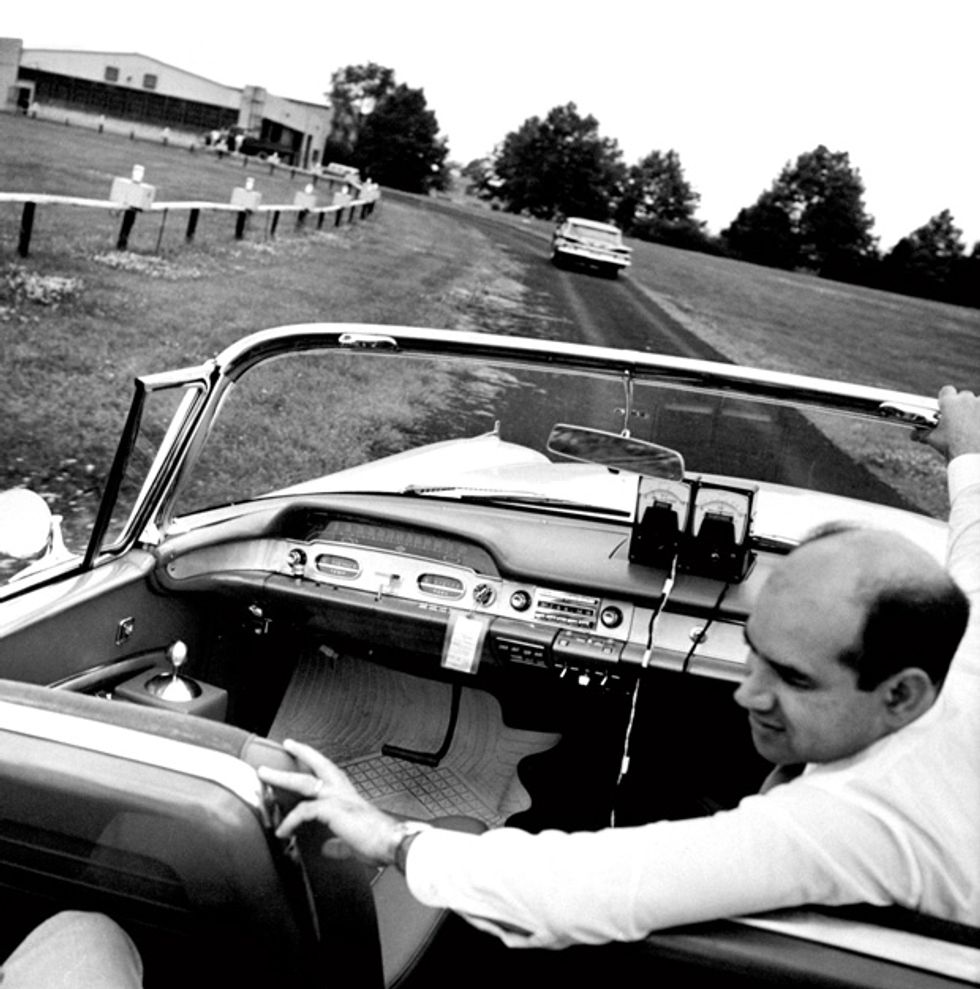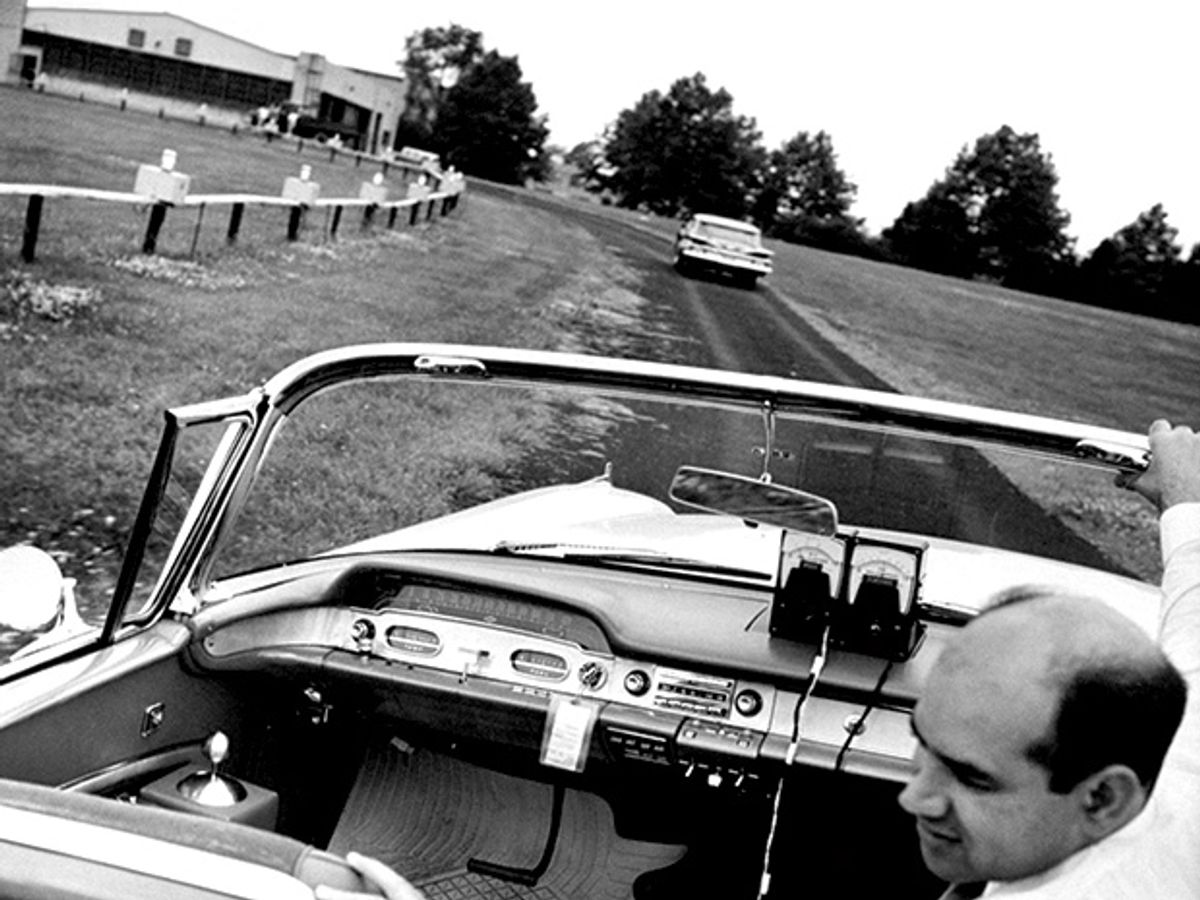
In the late 1950s, the Radio Corporation of America thought it had a lock on the self-driving car. The January 1958 issue of Electronic Age, RCA’s quarterly magazine, featured its vision of the “highway of the future”:
“You reach over to your dashboard and push the button marked ‘Electronic Drive.’ Selecting your lane, you settle back to enjoy the ride as your car adjusts itself to the prescribed speed. You may prefer to read or carry on a conversation with your passengers—or even to catch up on your office work. It makes no difference for the next several hundred miles as far as the driving is concerned.
“Fantastic? Not at all. The first long step toward this automatic highway of the future was successfully illustrated by RCA and the State of Nebraska on October 10, 1957, on a 400-foot strip of public highway on the outskirts of Lincoln.”
Two and a half years later, reporters got to experience this “highway of the future” for themselves, on a test track in Princeton, N.J. Cars drove themselves around the track, using sensors on their front bumpers to detect an electrical cable embedded in the road. The cable carried signals warning of obstructions ahead (like road work or a stalled vehicle), and the car could autonomously apply its brakes or switch lanes as necessary. A special receiver on the dashboard would interrupt the car’s own radio to announce information about upcoming exits.
Pictured above is an experimental autonomous car from General Motors, in which the steering wheel and pedals had been replaced with a small joystick and an emergency brake. Meters on the dashboard displayed the car’s speed as well as the distance to the car in front.
The system was the brainchild of renowned RCA engineer Vladimir Zworykin, who was better known for his pioneering work on television. In a 1975 oral history interview with the IEEE History Center, Zworykin explained his motivation for the autonomous highway: “This growing number of automobiles and people killed in accidents meant something should be done. My idea was that control of automobiles should be done by the road.” (Earlier inventors were similarly motivated by traffic fatalities; see, for example, IEEE Spectrum’s recent article on Charles Adler Jr., who came up with an automatic speed-control system for cars in the late 1920s.)
According to the RCA vision, it would be just a decade or two until all highway driving was autonomous, with human drivers taking over only when their exit approached. Well over half a century later, we’re of course just starting to get comfortable with autonomous vehicles on highways, and the problem of reliably transitioning between autonomous and human control still hasn’t been solved.
As for RCA’s demonstration, one contemporary account, in the Oxnard, Calif., Press-Courier, made it sound much like the autonomous car experiences of today:
“We stayed about 80 to 100 feet behind the other car, and when it stopped we pulled up smoothly to a halt 20 feet behind it. Then the demonstrator had the first car go around to the other side of the track and stop. Then he activated our automatic works and we started zooming around the single-lane oval.
“ ‘Now,’ said the demonstrator, ‘let’s suppose we’re cruising normally down the highway around a blind curve and we don’t know a car is stopped in front of us and—oops!’
“Our automatic auto apparently didn’t know it either. The demonstrator said later he probably had forgotten to flip a switch. As we sped dangerously close, he had to flip back to manual operation and apply the brakes the old-fashioned way, with a foot. We didn’t hit.
“Nobody screamed. But the age of automation can have its moments.”
Part of a continuing series looking at old photographs that embrace the boundless potential of technology, with unintentionally hilarious effect.
Evan Ackerman is a senior editor at IEEE Spectrum. Since 2007, he has written over 6,000 articles on robotics and technology. He has a degree in Martian geology and is excellent at playing bagpipes.



